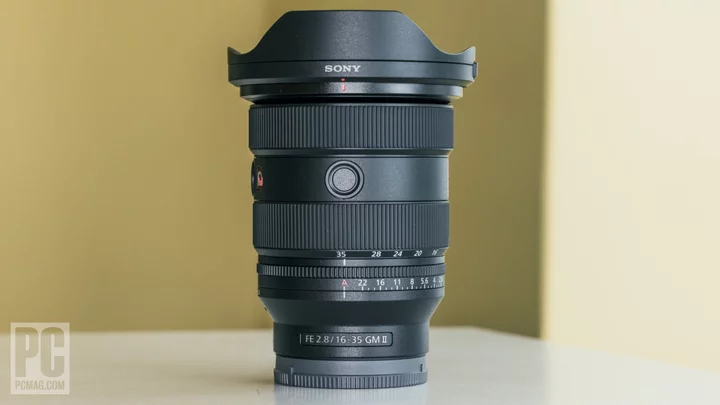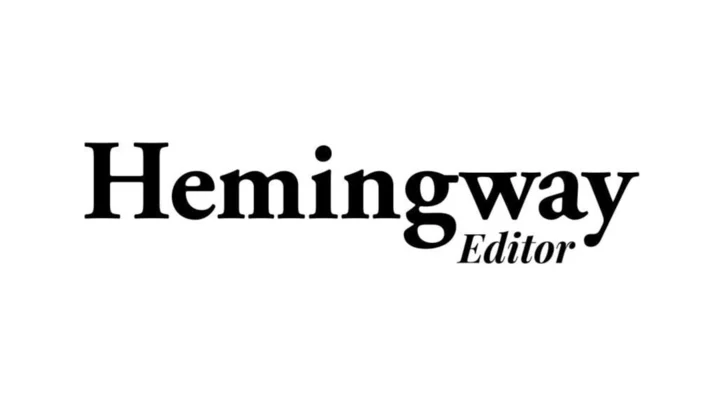Although Sony's G Master lenses are made for the long haul, the company has steadily been rolling out updated versions of early entries. The FE 16-35mm F2.8 GM II ($2,299.99) is an upgrade over the original 16-35mm F2.8 GM in every sense—it's lighter, offers more robust on-barrel controls, and focuses faster and closer. The only real downside is that its high price puts it out of reach for pretty much everyone except dedicated pros. Most creators who want wide-angle views are better off spending less for the FE PZ 16-35mm F4 G ($1,199.99), an Editors' Choice winner—but if you need the f/2.8 aperture, the latest 16-35mm is indeed excellent.
Sony's Shift to Smaller Lenses
Recent efforts from Sony share a common design philosophy. Almost as a rule, second-generation options are smaller and lighter than their predecessors, plus include more on-barrel controls. And inside, the engineers employ more exotic lens elements to improve picture quality.
(Credit: Jim Fisher)The original FE 16-35mm F2.8 GM is about average size for a zoom that covers its range at 4.8 by 3.5 inches (HD) and 1.5 pounds. The GM II cuts a little bit of height off for a 4.5-by-3.5-inch barrel and drops the weight down to 1.2 pounds. It uses the same 82mm filters to ease the pain of upgrades for landscape specialists and others who employ ND filters in their work.
The FE 16-35mm is part of Sony's top-end G Master line of lenses, which sits a step above the mid-tier G series. Sony has mostly abandoned Zeiss-branded lenses, though it still licenses the brand name for some fixed-lens models.
As a GM model, the 16-35mm is built to high standards. Its barrel uses a sturdy polycarbonate (yes, plastic) material and features dust and splash protection. Meanwhile, the front element has an anti-smudge fluorine coating. Sony includes front and rear caps, a reversible hood, and a soft carrying case in the box.
(Credit: Jim Fisher)There are many more wide-angle zooms in Sony's catalog today than when the original FE 16-35mm launched in 2017. Current-generation alternatives include the wider Sony FE 12-24mm F2.8 GM ($2,999) and FE 12-24mm F4 G ($1,774), along with the aforementioned FE PZ 16-35mm F4 G. A pair of low-cost, third-party options with shorter ranges, the Sigma 16-28mm F2.8 Contemporary and the Tamron 17-28mm F2.8, both come in around $900. The Sigma ultimately takes the edge over the Tamron thanks to its wider angle of coverage and sharper periphery.
Modernized Handling and Controls
(Credit: Jim Fisher)The above Sigma and Tamron options offer loads of value appeal, but they stick with just basic controls. Likewise, the original FE 16-35mm F2.8 GM has just two control rings and a focus toggle.
As mentioned, newer Sony lenses tend to have more toggles and control rings. The FE 16-35mm F2.8 GM II offers a few, including an aperture ring to set the f-stop and a pair of function buttons. The aperture control goes from f/2.8 to f/22 in third-stop increments and includes an A position to move control to the camera body. A nearby Iris Lock switch prevents the lens from moving between the A setting and the manual control range. A Click switch swaps between third-stop detents or smooth, silent aperture control for video.
(Credit: Jim Fisher)The function buttons sit in between the manual focus and zoom rings at 90 degrees apart, so you can manipulate either with ease, regardless of whether you're holding the camera in portrait or landscape orientation. The buttons set AF-ON by default with most bodies, but they are customizable, with the caveat that both perform the same function. Think of them as duplicates of the same button, rather than separate controls.
The on-barrel controls match up almost exactly with the FE PZ 16-35mm and don't stray too far from other recent G and GM lenses. The FE PZ's biggest differentiator is its zoom action—it uses an electronic power zoom to set focal length, whereas the F2.8 GM II is purely a mechanical zoom. The FE PZ thus has a leg up for video work in which smooth, steady transitions in focal length are vital. A mechanical barrel, for comparison, requires real effort on the part of the operator to make zooms appear seamless.
(Credit: Jim Fisher)The FE 16-35mm F2.8 GM II does a good job for video overall, however, because it suppresses focus breathing optically and focuses quickly and silently. The manual focus action is excellent as well. The combination of an ideal amount of resistance in the rubberized focus ring and a linear focus response gives the lens the feeling of a mechanically coupled system, with all the speed and accuracy benefits of electronic autofocus.
The barrel extends about a third of an inch longer at 16mm than at 35mm, but the center of gravity stays constant throughout the range. This is good news for creators who plan to use the lens with a powered gimbal, Steadicam, or other support system that works best with a balanced payload. The lens omits optical stabilization, but Sony puts that feature in almost all of its full-frame cameras; I was able to get sharp handheld half-second exposures with the lens and an a7CR.
(Credit: Jim Fisher)And the autofocus speed is fast, especially on a newer camera like the a7C II or a7CR, both of which lock on subjects a split-second faster than the a7R IV I typically use for Sony lens reviews. The FE 16-35mm GM II uses four linear XD motors to drive its two focusing groups. The groups work together to suppress breathing and allow for an 8.6-inch minimum focus distance throughout the range. That's good for a healthy 1:3.1 macro rating at 35mm, a bit better than the FE PZ 16-35mm F4 (9.4 inches, 1:4.3 magnification).
a7CR, 16mm, f/5.6, 1/30-second, ISO 400 (Credit: Jim Fisher)Sony FE 16-35mm F2.8 GM II: In the Lab
I used the 60MP a7R IV and Imatest software to check the FE 16-35mm GM II's optical performance. It scores well on the evaluation. At 16mm, the lens shows very good resolution through f/4 (4,000-4,300 lines) and improves to the excellent range from f/5.6-f/11 (4,500-4,700 lines). It gets a little sharper as you zoom in. At 25mm and f/4, it remains in the excellent range and is tack-sharp at 35mm and f/2.8 (4,500 lines).
Be careful when you use the lens at smaller f-stops across its focal range: Resolution drops off because light particles scatter as they pass through the smaller opening. The lens just isn't sharp (2,400 lines) at f/22, but that's expected.
a7C II, 16mm, f/16, 1/30-second, ISO 200 (Credit: Jim Fisher)Of course, you might still consider setting the aperture to its smallest setting if you're chasing sunstars in your landscape shots. Diffraction works in your favor here, drawing small points of light as 22-point starbursts. You get the best results at f/16 and f/22. Sunstar quality is subjective, but I'm disappointed that the tines streak out into multiple arms away from the center. This lens does better when tree branches partially obstruct the sun.
I had an easier time getting sunstars out of the FE PZ 16-35mm F4, which shows them in shots with the aperture set as wide as f/11. I even noticed more striking results with the budget-line Sigma 16-28mm. On the plus side, the FE 16-35mm F2.8 GM II doesn't show any loss of contrast or flare in images with the sun in the frame. It suppresses ghosts better than the more affordable options, too.
a7C II, 16mm, f/10, 1-second, ISO 100 (Credit: Jim Fisher)I didn't spot any sort of false color in photos I captured with the a7C II and a7CR. Focus transitions and reflective surfaces are free of green and purple halos associated with longitudinal chromatic aberration (LoCa), and I couldn't spot any purple fringing around tree branches or power lines, an effect of lateral CA.
Wide lenses aren't typically a first choice for defocused backgrounds, but you can get some bokeh from the 16-35mm F2.8 GM II by focusing close or by picking a subject with clear background separation. Wide open, the lens draws soft backgrounds with circular highlights that show no evidence of onion skin, hard edges, or other distracting effects.
a7C II, 35mm, f/2.8, 1/200-second, ISO 100 (Credit: Jim Fisher)Sony leans on in-camera corrections to compensate for distortion. If you use your camera for JPGs or work with Raw files in editing software that supports correction profiles, you can happily use the lens for architecture, real estate, and other disciplines that call for undistorted views. If you stick with uncorrected Raw files, images show barrel distortion at wide angles, pincushion distortion at longer focal lengths, and darkened edges and corners at f/2.8. Sony hasn't released a correction profile for apps like Adobe Lightroom Classic, but we expect it to eventually.
(Credit: Jim Fisher)Not Everyone Needs F2.8 Optics
There's no question about it: Photographers pay a premium for first-party F2.8 zooms. The Sony FE 16-35mm F2.8 GM II doesn't change things—it costs nearly twice as much as the FE PZ 16-35mm F4 G. Photographers and videographers who specialize in weddings and other high-profile events can likely justify the extra cost of this exceptional lens, but if you stick with disciplines that call for tripods and long exposures, such as landscapes or architecture, it's a much harder sell. And if the F4 zoom is still too pricey, the Sigma 16-28mm F2.8 Contemporary ($899) is a more affordable alternative.









